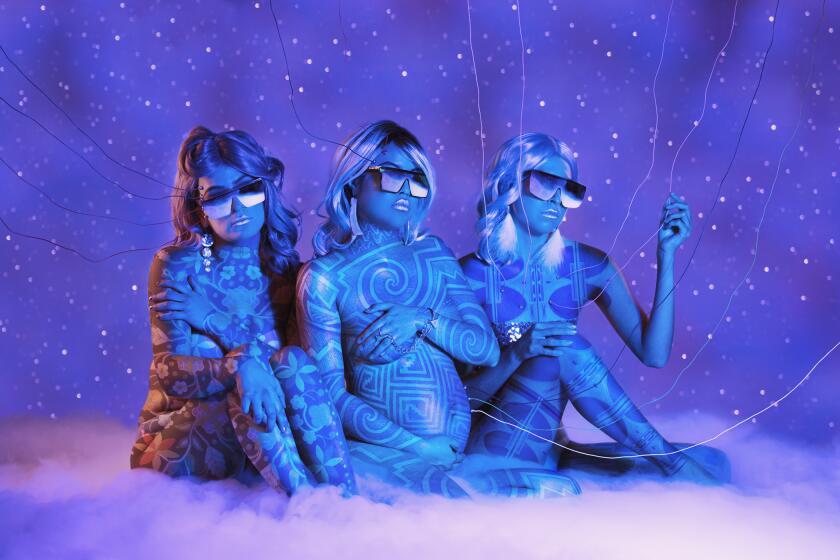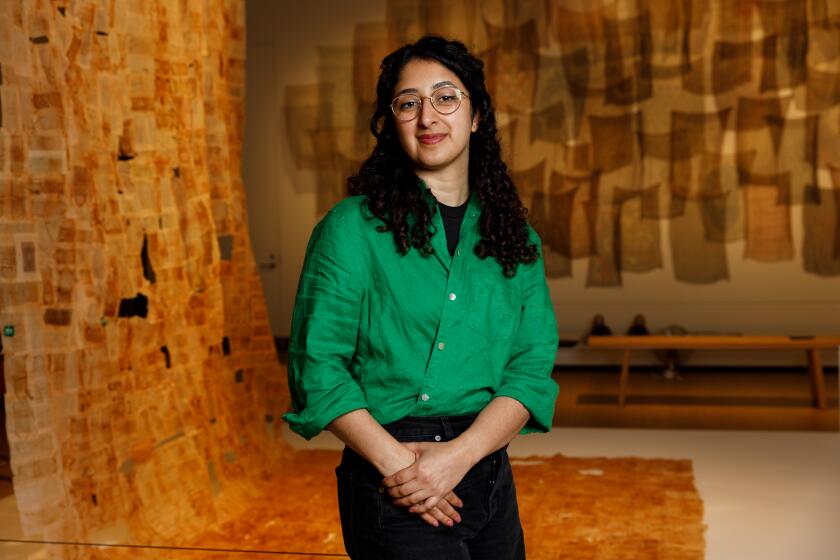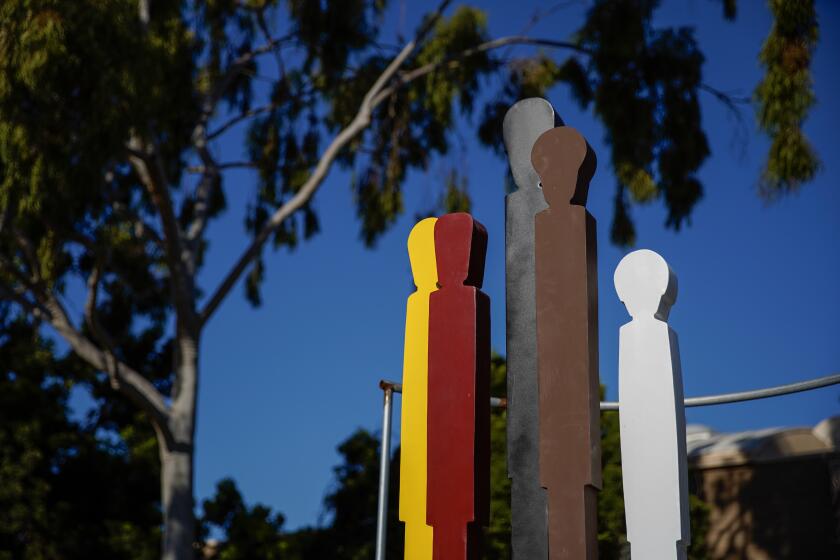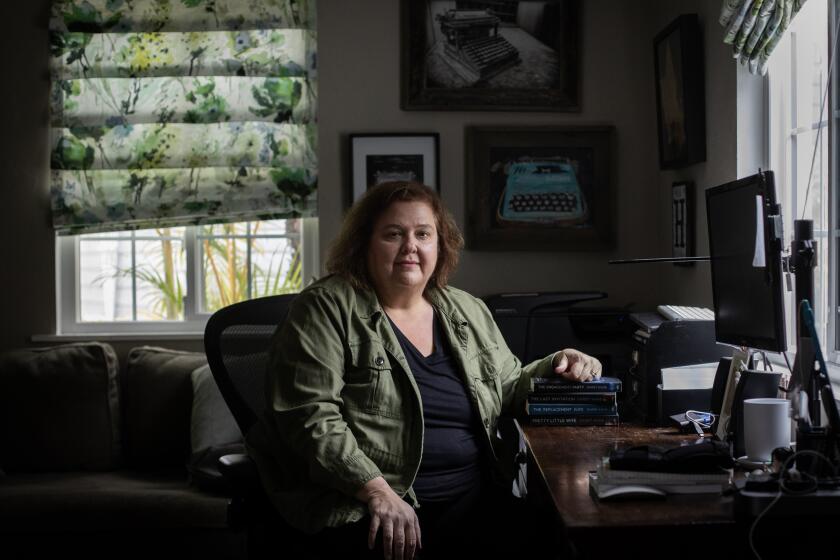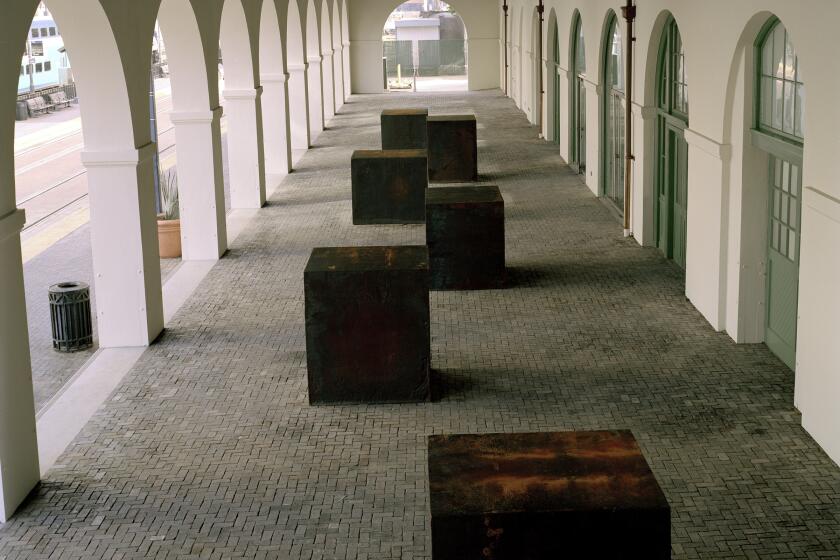Rising to every challenge: Roxana Velasquez has led a decade of diversity at San Diego Museum of Art
‘It is important that the museum’s acquisitions represent multiple areas and voices. Diversity has always been important to us. That is in our DNA.’
Roxana Velasquez, the executive director of the San Diego Museum of Art, has made it her life’s mission to expose as many people as possible to art. All forms of art, she says, along with love and thought, enlarge and enhance our lives. Gazing at a painting is more than admiring the careful brush strokes; every painting tells a story, captures a moment in time, and evokes emotion.
Velasquez completed her 10th year on the job last month. The SDMA community has published a list of her accomplishments, which extend over several pages in the membership magazine. Included are unforgettable exhibits, globally significant acquisitions, transformational technology and even an upgrade of the air conditioning system. All of this was done despite the financial crisis that was underway when she first arrived in September 2010 — The Great Recession, remember that? — and the current COVID-19 pandemic that forced the museum doors to temporarily close.
Q: First, how did you decide on a career in art?
A: I was raised in Mexico City surrounded by art. In the Spanish and Mexican culture, exposure to art is considered a right. When you walk down the streets, you see sculptures everywhere. There are a thousand museums, and admission is free for everyone.
I enjoyed it all so much, I decided to study art history. My first job was as a curator at the National Museum of San Carlos. I later became its executive director. What I always loved is to see people excited about art. You can see it in their eyes. You don’t have to know about art to enjoy it.
Q: You were a director for 20 years for three museums in Mexico before coming to San Diego. What do you remember most about your first day on the job?
A: I remember walking into the board room to meet everyone, the board members and the staff, for the first time. I was so excited to share my enthusiasm with them. I walked through all the galleries and saw enormous possibilities. I let everyone know that what we do is always teamwork.
Q: Early on, you were interviewed on KPBS (89.5) radio and asked how you were dealing with the Great Recession that started in 2009. SDMA was financially stable, but a lot of other museums closed down. You answered that some sort of crisis happens all the time, and that creativity is born of crisis. And then, in your 10th year, came a global pandemic and a pause in life as we knew it. How did you deal with that?
A: We did have to close the doors early in March, but we were well-prepared to immediately transfer to an online format. Six years ago, we introduced our app, which gives people access to our collections and lectures through their smart phones. While the museum building was closed, we made a more robust website design, adding features people could access virtually. We kept up with our daily schedule of staff and board meetings, using Zoom and Webex. We worked very hard; we were absolutely happy and optimistic, but exhausted.
We were ready to reopen in July, but we did not get permission to do that. Yet during that time, we discovered something wonderful: We were reaching so many more people because online, we are not limited by physical capacity.
Normally, our summer camps would have room for 20 to 25 children; online, 1,500 children from nine states participated in this year’s summer camp. Art events and lectures at the museum would draw up to 400 people and sell out quickly. Hundreds more could participate virtually. A lot of people in Europe were viewing our “Masterpiece Minute” podcasts.
We reopened for the Labor Day weekend. We had 1,600 visitors come between that Friday and Sunday. Having that large number of people showed they had confidence and trust that they would be safe. We have 20 galleries and the sculpture garden, so it is easy to have social distancing. We continue to offer the museum experience both in person and online.
Q: You have established relationships with museums all over the world and have loaned pieces of the permanent collection for exhibits in China, Canada, India, Mexico and Spain. Has that raised the museum’s international credibility?
A: Yes. It is important to have reciprocal relationships with other institutions. There is a lot of interest in the miniature Indian paintings in our Binney Collection, which represents work from the 8th to the 18th centuries. Our collections of Indian paintings and European Old Masters are among the best in the world. And 43 percent of our work is from Asia.
Q: In your yearly report to the museum members last month, you emphasized the important acquisitions of the last 10 years. Could you tell us about a few?
A: We added 2,560 works of art, including drawings, paintings, prints, photos, videos, sculptures and objects. We worked with private collectors and donors and purchased some stellar pieces.
”St. Francis in Prayer in a Grotto” is a masterpiece painting by an 17th century artist, Francisco Zurbaran. He created an industry and sold his paintings abroad, which was very modern for his time.
Another treasure is “Nymph of the Spring” by 16th century German artist Lucas Cranach the Younger. There is so much beauty in the face and the subtle details reveal mythology and mood. It is in pristine condition.
In 2017, we acquired the museum’s first John Singer Sargent painting, “John Alfred Parsons Millet.” Sargent painted the portrait as a gift to the boy’s mother. It is exquisite. There is so much spontaneity in the brush strokes.
Q: Women and artists of color are thought to be under-represented at many art institutions. What about at SDMA?
A: We have always considered diversity in everything we do. In 2013, we invited the incredibly talented local artist Marianela de la Hoz to create a work for us. She uses traditional Renaissance painting techniques to portray modern challenges. “Heaven and Earth: The Determined Freedom of an Undetermined Life” is an altarpiece with 11 individual paintings.
“Harem #14C,” a mosaic photograph with chromatic printing, is by Lalla Essaydi, a contemporary Moroccan-born woman. This work is beautiful and colorful, and it clearly comments on the challenges of being a woman in the Islamic World.
It is important that the museum’s acquisitions represent multiple areas and voices. Diversity has always been important to us. That is in our DNA.
Gaugh is a freelance writer.
Get U-T Arts & Culture on Thursdays
A San Diego insider’s look at what talented artists are bringing to the stage, screen, galleries and more.
You may occasionally receive promotional content from the San Diego Union-Tribune.
